City Agrees to Plow Hank Aaron Trail
Finally some progress. How my advocacy with state and city officials paid off.
I learned a long time ago to stay “zen” while riding my bike. Riding a bike is an inherently fun, healthy and safe way to get around, but if you don’t maintain your cool, you run the risk of letting others ruin your ride. Still, I think it is OK to get angry about the inequities in our auto-centric culture if you channel that anger into effective advocacy.
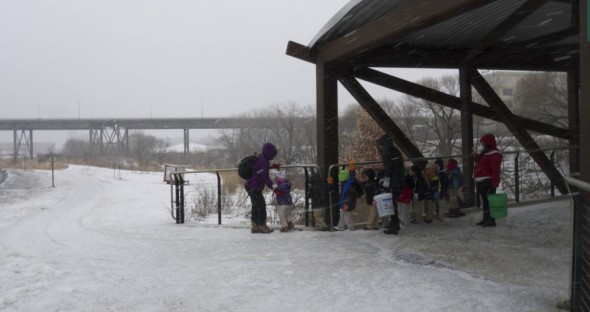
Ten little reasons why the Hank Aaron State Trail should be maintained in the winter. There are classes of little kids who use the trail most every day, all winter long. Here you can see they have to hold the railing and inch along the raised edge of the bridge because the path is iced over.
Don’t get me wrong, I don’t flip my middle finger or curse after a close call with an inattentive driver, and I don’t rant when I have a ride ruined by poorly maintained bikeways. Those things bother me just like anybody else, but I try to bottle my frustration to fuel my advocacy efforts to make a positive change. I try to channel my anger into advocacy.
Regular readers may remember a recent blog post I wrote in which I complained that I wouldn’t ride my bike to Milwaukee’s Winter Farmers Market because the best route from my house is on the Hank Aaron State Trail, which has not been plowed this year. Even though there are other on-street routes to the market at the Mitchell Park Domes, the lack of winter maintenance bugged me so much that I ended up coming home from the market all pissed off.
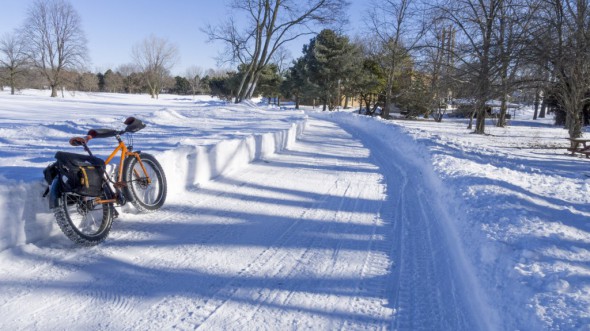
Despite almost daily, heavy, drifting snow, Milwaukee County Parks have kept the Oak Leaf Trail plowed through Doyne Park.
I recognized that I was depriving myself of locally grown produce in the heart of winter and the lack of plowing was really no different from the many other inequities we face given our unbalanced transportation system. I considered trying to be more zen about it, but sometimes we just have to make a stand or things will never change. So I sipped on my bottle of frustration while I made phone calls, sent email and met with the WDNR regional trail manager, the City of Milwaukee Engineer, the Commissioner of the Milwaukee Department of Public Works and even the head of Milwaukee DPW Bridge Maintenance because they maintain the bridges on Canal Street.
Truth be told, I’ve been talking to these folks about winter maintenance of the Hank Aaron State Trail for a couple years. The trail functions as a sidewalk along Canal Street, so by city ordinance it should be cleared of snow and ice, just like any other walkway. Most of the Canal Street property owners along Canal do a pretty good job of clearing the trail, but large segments of the trail have no adjacent private property owners and so the task fell to the State since it is their trail. Unfortunately, the WDNR has never had a budget for winter maintenance, even though they signed a Memorandum of Understanding that they would plow it.
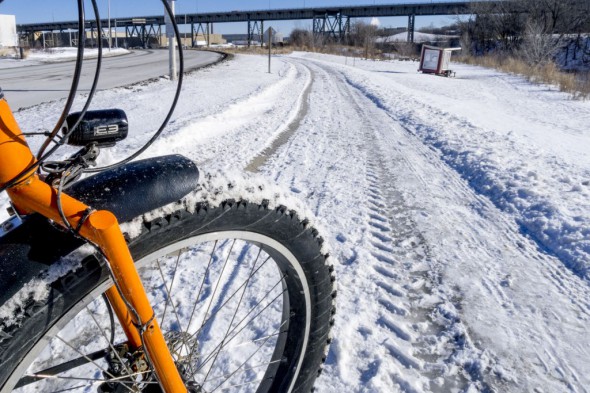
Not bare pavement, but thanks to the City of Milwaukee, you can ride the Hank Aaron State Trail again on a mountain bike or fatbike. It is a big improvement over last year.
I pointed out that the city maintains the bridges at 6th Street, 32nd Street and at the Menomonee Valley Passage and they have several properties on the trail. I suggested they keep the plow blade down from 6th to Selig Drive rather than just do the segments on the bridges and by their properties. The city resisted, given that it’s the state’s trail, the state’s responsibility, and there would be real additional costs incurred.
Eventually I filed a formal online service request to get the trail plowed, just as I would do if a neighbor or a business refused to shovel their walk. The city has a policy that they give a warning, and if the property owner still does not clear the walk, city crews plow the walk and bill the property owner. Because I filed the report, a crew was sent out to clear the trail; they even called me to figure out what kind of equipment they would need.
Following that, there was a meeting between key staff from the Milwaukee DPW and the WDNR Trail Manager, Melissa Cook. I called Melissa to see how the meeting went and she said it went wonderfully. In fact, the city has agreed to plow the segments of the trail up to the Menomonee Valley Passage and even to Selig Drive after the packed down ice melts. While this is a temporary and partial solution, the trail is now rideable, so I am pedaling to the Winter Farmers Market again!
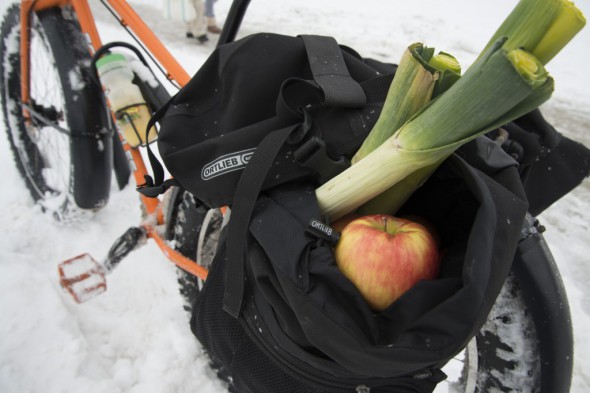
To market to market to buy some fresh locally grown leeks, apples (carrots, potatoes and onions not pictured).
I would like to thank the folks at DPW, the WDNR and Milwaukee County Parks. I talked to the Parks Department about improving winter maintenance of the Oak Leaf Trail. Even given our tough winter this year, I can testify that the county has done a much better job of plowing the sections of the Oak Leaf that are most heavily used. Three cheers and many thanks to all the government agencies involved.
This article was originally published by the Bicycle Federation of Wisconsin.
Bike Czar
-
Join a Bike Ride Under the Polish Moon
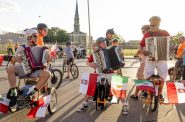 Jun 1st, 2018 by Dave Schlabowske
Jun 1st, 2018 by Dave Schlabowske
-
9 Reasons to Join National Bike Challenge
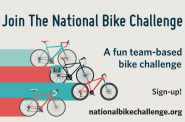 May 4th, 2018 by Dave Schlabowske
May 4th, 2018 by Dave Schlabowske
-
Biking Through the Mindoro Cut
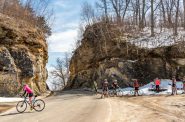 Apr 27th, 2018 by Dave Schlabowske
Apr 27th, 2018 by Dave Schlabowske


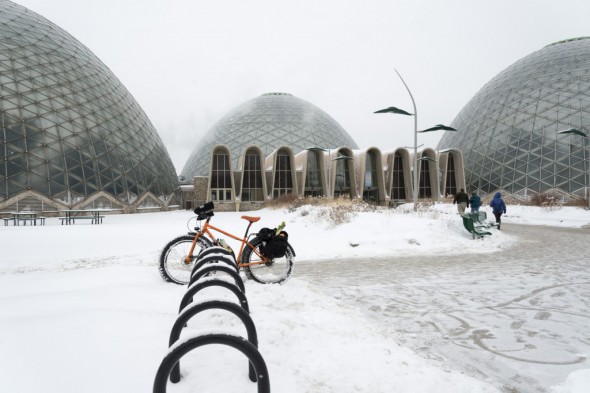

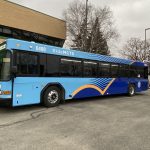
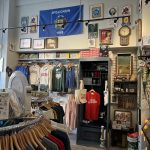














Do you have any advice on how to petition the parks department to plow the Oak Leaf Trail between 115th and Underwood parkway? The new construction of Swan and Research Parkway both have great (plowed) bike lanes, but they are hard to access safely without the trail.
Thanks.
Hey Drew,
I suggest you ask the County Parks specifically about that segment. They might not be able to do anything this year, but Ramsey Radakovich would know more about it: Ramsey.Radakovich@milwcnty.com
I will add that to my list when I talk to them next too.
So any idea if DPW picking up the costs, or is the DNR going to reimburse?
I am pretty sure the City of Milwaukee is just eating the cost this year. It is really nice of them, but I don’t think that is a sustainable model. I think we should work for a winter maintenance budget for the WDNR in which they pay the City or the County to maintain the trail, the same way they do to plow the trails on Lakeshore State Park. I’m just glad the state and the city worked this out.
The unnecessary plowing of these trails using public funds has a large cost for a small benefit. Are zealots just naturally drawn to biking everywhere when the other 99.5% drive, then to bitch and moan to use as much public money as possible to enable their hobby?
Biker: “I can’t ride to the market because there’s snow on the trail”
Public: “Take the bus, drive, or ride in the street”
Biker: “No, you can’t make me”
Public: “…”
Biker: “Government, I want you to use everybody else’s tax money to plow my personal bike trail so I can pick up my onions on my 12 speed”
Government: “We don’t have the money for winter bike trail maintenance and save our resources for times of heavier trail use”
Biker: “I’ll just blog about it then and tell my internet bike zealots to complain”
Government to the maintenance guy: “Just plow the trail to shut this weasel up”
The Hank Aaron State Trail functions as a sidewalk in an urban area and as the trail counts show, is used by thousands of people every month all winter long even though it has not been not plowed (until now). The City of Milwaukee has generously agreed to plow the trail because they have a responsibility to maintain public walkways, per the ordinance that requires sidewalks to be cleared of snow. The WDNR signed a binding MOU agreeing to maintain the trail where it functions as a walkway along Canal Street. It has nothing to do with my blog post. I used my experience as an example of how to get things done if you have patience and time. The point is government is responsive, but most people don’t have the time to keep working on an issue, hence the value of organizations like the Wisconsin Bike Fed, ABATE of Wisconsin, the Association of Wisconsin Snowmobile Clubs, and other similar groups. The added cost of plowing the few sections of trail not already cleared by private property owners who abut the trail is minuscule. Every day classes of children from nearby schools use the trail, people with disabilities use the trail; workers who need to get to the thousands of jobs in the Menomonee Valley trudge through the snow; and people ride bicycles to work, to the market and to go out at night. What if we changed your rant/whine to a different mode?
The unnecessary plowing of cul de sac streets using public funds has a large cost for a small benefit. Why do people who choose to live in on dead end streets expect the public to pay for their personal choice to live on with a few other families in neighborhoods far from their jobs.
In our society, the public shares public costs for public good, even if personally we don’t benefit from them. Even if we don’t have children, we pay for public schools because our community benefits from a well educated population. I pay for curb ramps for those with disabilities, even though I don’t need them. I don’t go to Brewers games, but I pay for Miller Park because our community benefits by having a major league baseball team. The reality is highways are more than 50% subsidized by general tax dollars. Local roads are nearly 100% paid for by property taxes and fees. The idea that I pay for the roads with gas taxes and user fees when I drive is a myth, similarly, even those who don’t drive pay for roads. I pay the same property taxes, snow and ice removal fee and storm water fee as my neighbor, even though I don’t need a 50ft wide road with unused parking surrounding my house that creates a tremendous amount of runoff ever storm. My neighbors park their extra cars in the spaces I pay to have plowed and maintained.
We all share costs in our society, even if we don’t directly benefit by every service our government delivers.The thing is, bicycle and pedestrian facilities have a very high return on a very small investment. From the perspective of a steward of public funds, dense development combined with good pedestrian, bicycle and transit networks is the most cost efficient and conservative way to live.
This story cracks me up for so many reasons:
1) Great of Dave to take a bunch of pictures showing no other bike riders. I thought the flood gates were going to open and we’d see a veritable peloton on the trail.
2) The streets are plowed. You do get to ride your bike in the streets. At least they seem to let me ride in the streets.
3) The old misdirection. Dave talks about all the people who need to walk this trail to get to jobs. Really? I ride this trail almost everyday during from April through October right before work and one of the great things about this trail is there are literally no other pedestrians and really not very many other bikers. Unlike parts of the Oak Leaf that have been overrun by people walking 4 across, jogging on the wrong side or walking their pooch it’s literally a joy to ride. So far I haven’t had to dodge the many people walking to their job in the valley.
Mike,
1) If you notice, there are no cars visible on the road in the photo either, but that doesn’t mean nobody drives on Canal Street. But if you look through the spokes on the photo, you can see other tire tracks that morning and remember, the trail was not being plowed until just before I took this photo. If we stopped plowing a road all winter and then began plowing it again suddenly one day, it would take a while for people to begin driving on it. We have traffic counts that show thousands of cars a day on Canal. The counters on the trail show thousands of users per month.
2) I will repeat for the third time: this trail functions as sidewalk along Canal Street from 6th to Selig Drive. As such, city ordinances require it to be maintained in the winter. I have not been advocating that it be plowed out to 124th Street, just where it serves the businesses. Yes, you and I can ride our bikes in the street, but I don’t want the kids from the neighborhood schools who use the trail and park every day walking in the street. I also don’t want the woman in the motorized wheel chair I frequently see riding up the trail just east of 32nd Street dodging cars on Canal Street.
3) I agree with you that compared to the Oak Leaf trail on the east side, the Hank Aaron State Trail gets way fewer users. I often shake my head at why relatively few people use the Hank Aaron State Trail compared to other trails, but I think it has a lot to do with access in the Valley. Lower numbers aside, the trail counter show that on average from July-September 474 people a day used the trail in 2013. The connection to Mitchell Park only opened at the end of the 2013, and that will bring more people onto the trail, so I will bet you a beer the numbers are higher in 2014.
In general though, I find it odd that anyone would get so bent out of shape asking that our walkways and bikeways in urban areas be properly maintained all year. I never suggested we plow the Glacial Drumlin between Waukesha and Cottage Grove, but I think when we build urban trails they become part of our urban transportation network and should be maintained in the same manner as our streets. Cities that do that, like Madison and Minneapolis, are rewarded with more people walking and bicycling all year. The incremental cost is extremely minimal, and the return on investment is very high.